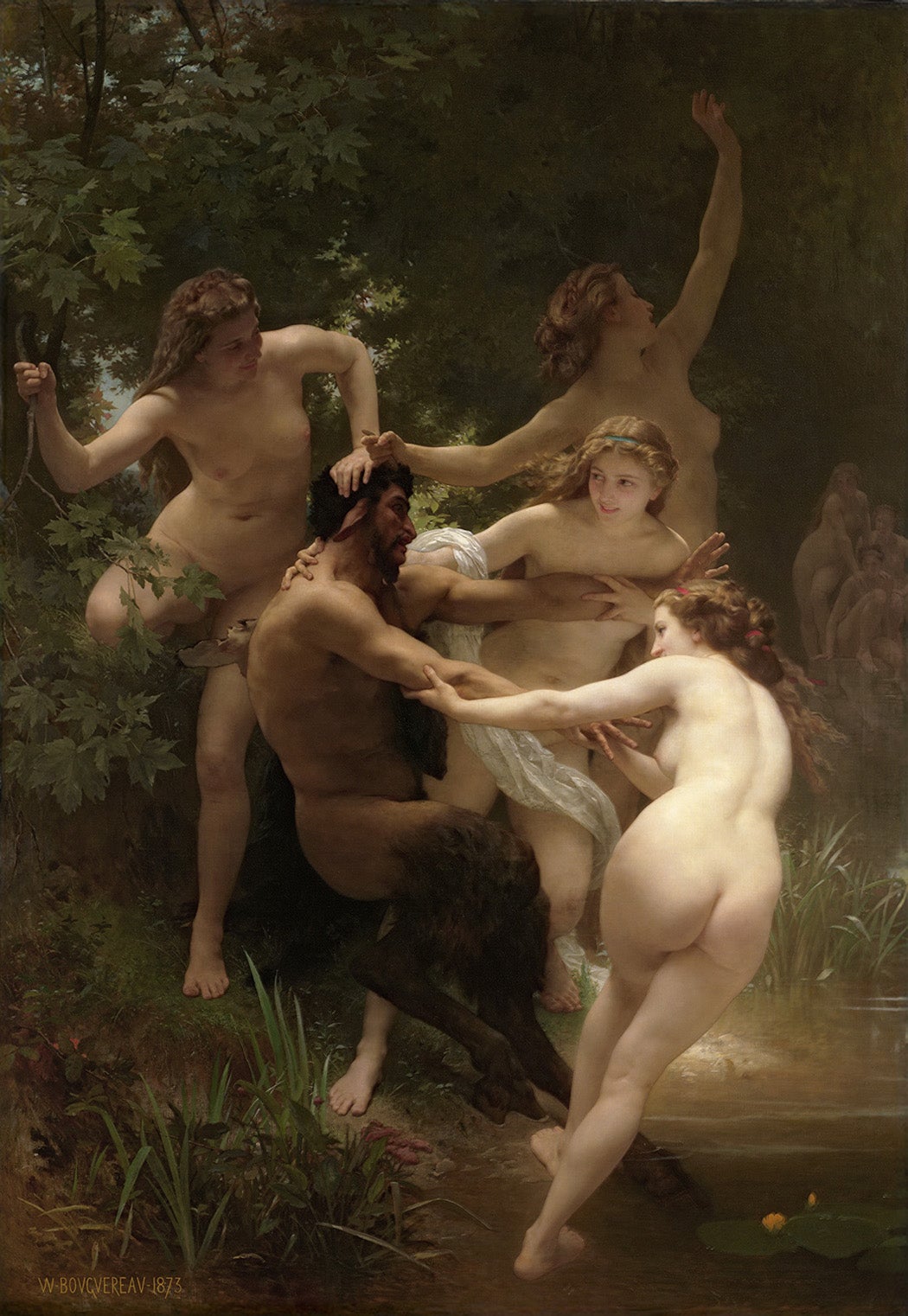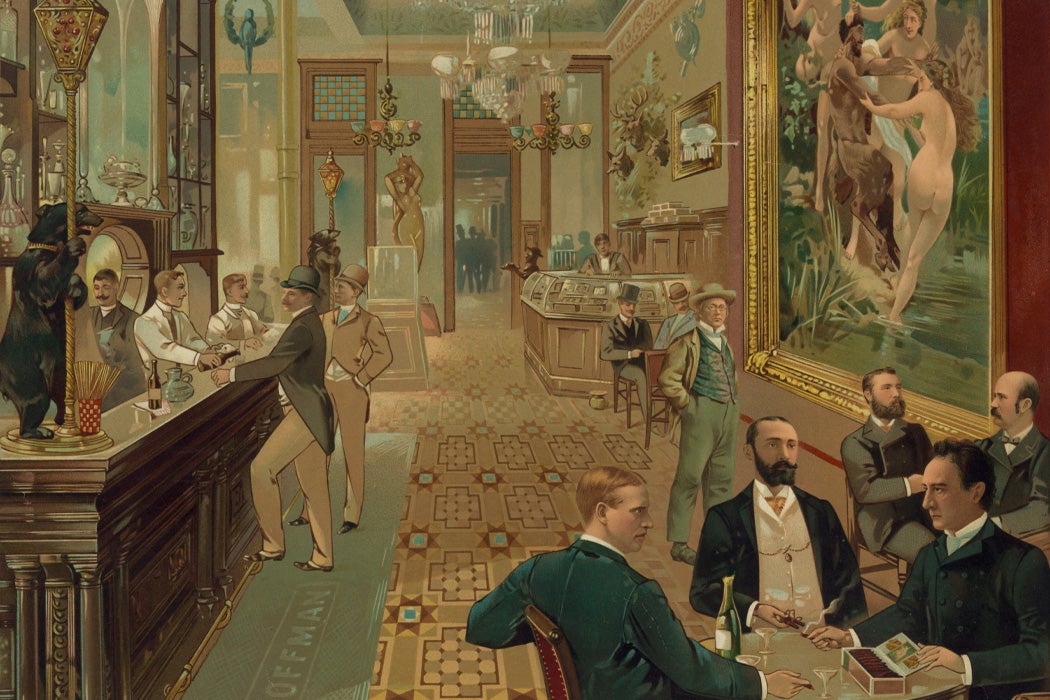In 1873, a painting was hung in the Hoffman House Hotel that changed the perception of femininity in Gilded Age-era New York City.
According to art historian David Scobey, tobacco heiress Catharine Lorillard Wolfe sold the painting Nymphs and Satyr for $10,000 to renowned hotelier Edward Stokes. The painting depicts a mythological scene of four nymphs teasing a satyr. The lush image suggests female domination and sexual power, as the nymphs coyly tug the satyr into the water. Stokes hung the large, provocative painting in his hotel’s bar, for all to see.
The painting “was the work of William Bouguereau, perhaps the most eminent French academic painter of the second half of the nineteenth century.” Scobey notes that Bouguereau was derided by “advanced” art critics “for what was seen as his facile, soulless proficiency.” American art collectors, however, loved him.
This work wasn’t displayed in a proper art gallery or museum, though—to Stokes, the bar was a natural choice for the sensual work, as it was a gathering place for New York’s socialites, actors, businessmen, and other wealthy men. The painting soon become a tourist attraction. People lined up and crowds gathered to catch a glimpse of the titillating image. Magazines covered the story. The bar room painting set a trend, as hotels and bars in Chicago and San Francisco followed suit, exhibiting their own classical nudes.

Displaying the nudes of Nymphs and Satyr in public “marked a sea change in bourgeois aesthetic and moral sensibilities.” Women saw the painting too, as the hotel was located in what was called the Ladies’ Mile, a neighborhood in Manhattan filled with elite shopping. Scobey writes:
If the reception of Bouguereau’s canvas was symptomatic of a new configuration of attitudes toward gender relations, sexual display, and public culture, this reconfiguration was in large part the work of genteel women who occupied public spaces and took part in public spectacles that would have been impermissible forty years earlier.
Gilded Age norms considered female nudity to be respectable only in opulent and exclusionary areas reserved for the men who supposedly understood classical art in a more refined way. This painting challenged that assumption. As Scobey writes, “Indeed Bouguereau’s canvas laid bare not only the bodies of his nymphs but also a moral transformation that was taking place inside that class milieu: the emergence of new norms for the legitimate display of female bodies in public.”
Once a Week
This piece of art and its atmosphere became en vogue. Just as women looked to fashion spreads in magazines for sartorial inspiration, Nymphs and Satyr became an avatar for them as the nymphs were depicted as women with a kind of power. Scobey concludes: “Nymphs and Satyr never lost its symbolic power as the badge of a certain bourgeois daring and desire.”







